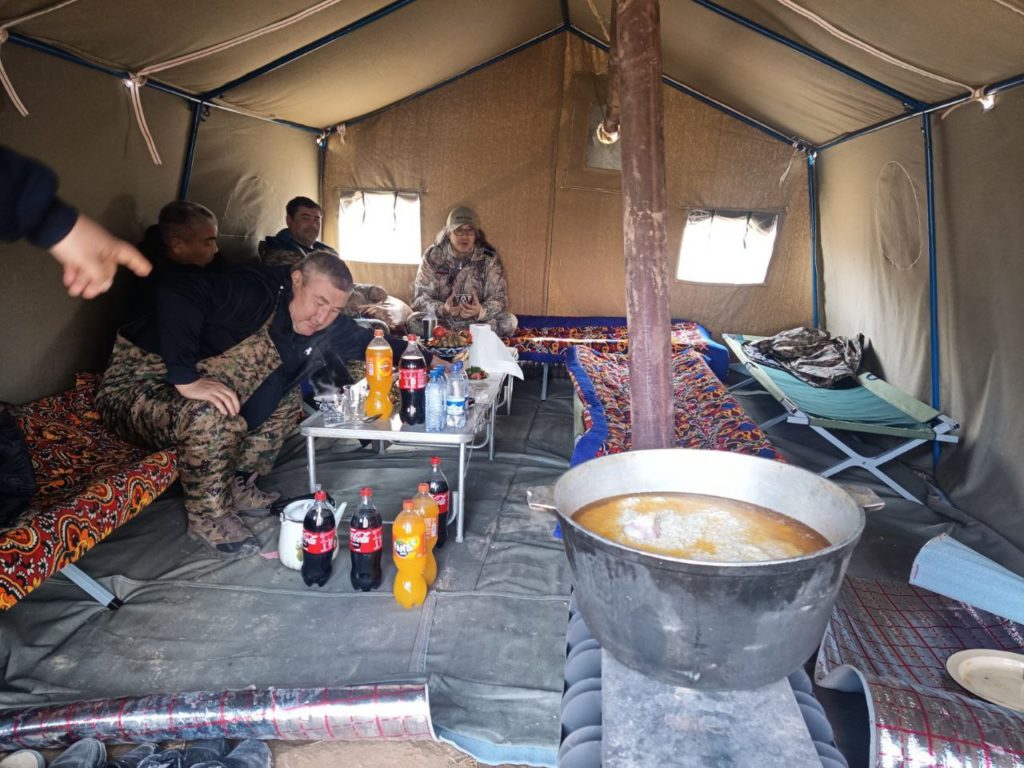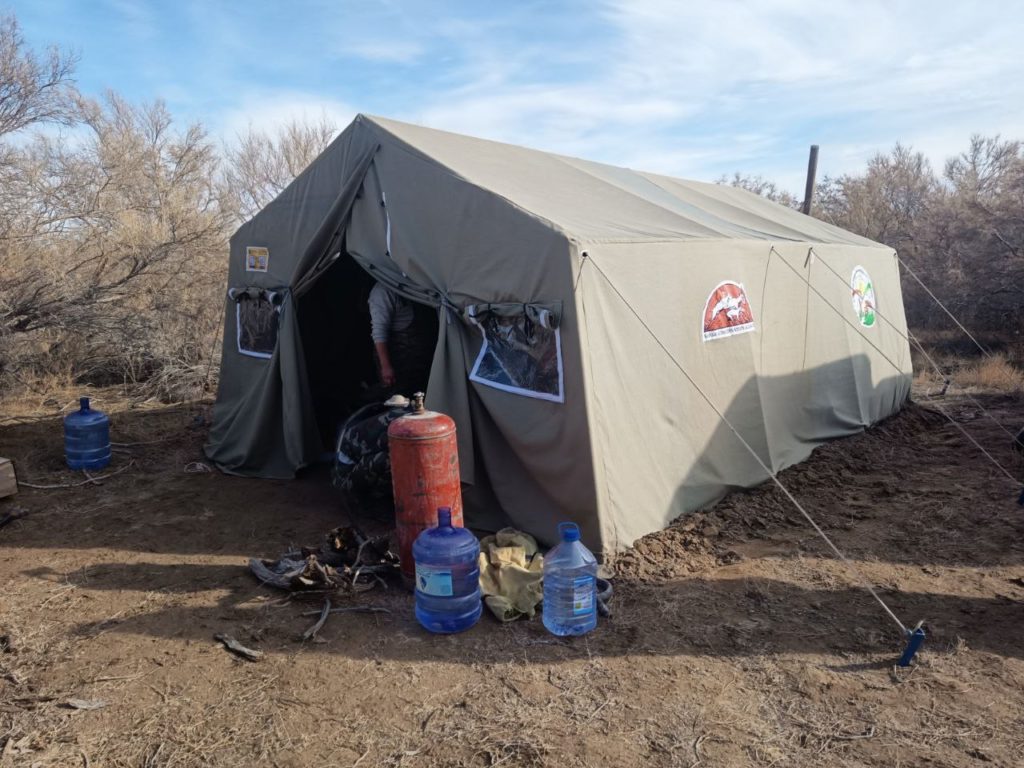Rangers units spend 365 days in the field. Including Christmas Day.
Their work which includes anti-poaching patrol and monitoring the saiga on a daily basis is vital to preserve the species for future generations.
The better equipment and living conditions the better the outcome for Saiga and the ranger will feel the dedication of being under canvas on Christmas is worthwhile.
With the support of Saiga Conservation Alliance’s donor, ranger in Saigachiy Reserve, employed by our partner State Committee of the Republic of Uzbekistan on Ecology and Environmental Protection (SCEEP) purchased a new 10pax tens, camp beds and a potbelly stove.
This camp creates a solid bush camp, which is mobile and more comfortable aimed at improving the efficiency of the sanctuary’s work in monitoring saiga and other fauna living on its territory, as well as environmental education with the local population.
One can only imagine how much more comfortable life in the field can be on a camp bed next to a pot belly stove.


While in the field the Ranger’s stay at home and their kids attend school together with others. In the spring, thanks to Steppe Wildlife Club’s school children get the opportunity to get an insight into the work of rangers and how important Saiga conservation is to the local environment.
In Russia 7 Steppe clubs celebrated Saiga Day and about 300 Children participated in it.
In Uzbekistan 5 Steppe clubs and 5 new schools celebrated Saiga Day, and about 500 people participated in it. In Kazakhstan 3 Steppe clubs celebrated Saiga Day and about 90 people participated in it.
Steppe clubs conducted various events within the Saiga Day this year – quizzes, drawing contests, poetic contests, open lessons, lectures, master classes, and so on. With almost 900 children taking part, Saiga Day is to be the main celebration of the year for the Steppe Wildlife clubs so it draws a lot of attention, inspiration, and creativity.
Most importantly it helps children understand the important work being carried out by their parents out in the field patrolling for poachers and monitoring Saigas. Where they can learn how important saiga conservation is and give them the tools and carry on the legacy of their parents and teachers.
